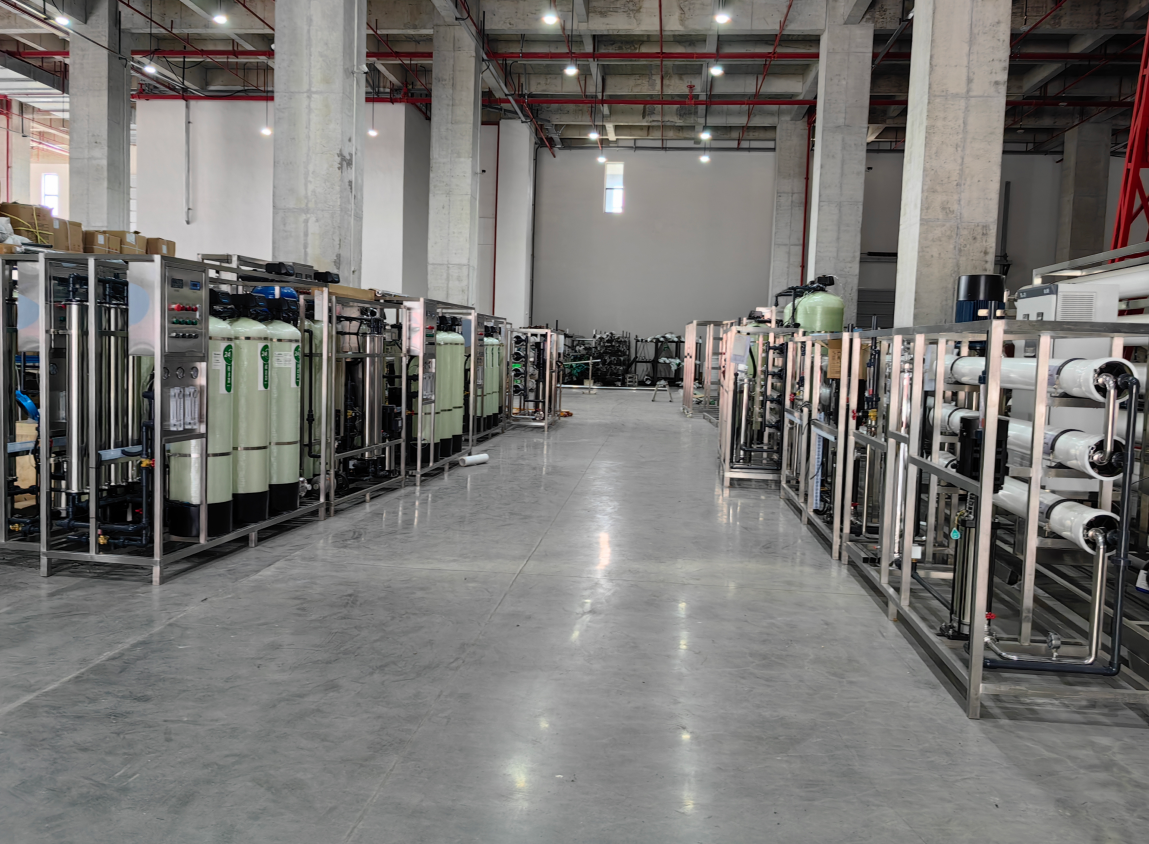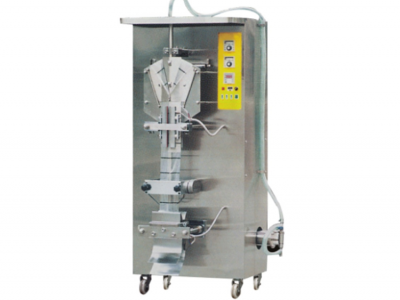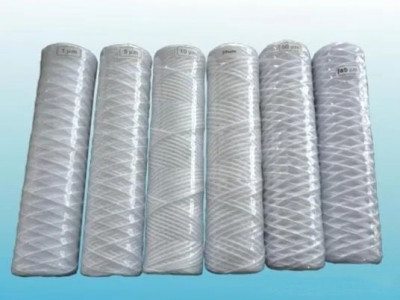1.2.2 Relationship between inlet water temperature and water production capacity
The rated water yield of the equipment is set assuming an influent water temperature of 25oC. The water yield of the reverse osmosis system decreases as the feed water temperature decreases. In general, for every 1oC decrease in water temperature, the water production will decrease by 3%.
1.2.3 Names and functions of components
1.2.3.1 High-pressure pump – high-pressure pump using southern vertical multi-stage centrifugal high-pressure water pump, which is an important component of the RO host, its role is to give the RO membrane conveying a certain amount of a certain pressure of the water source. Use should ensure that no idling, not long-term overload operation, often exclude air as required, should ensure that the electrical part of the dry.
1.2.3.2 High-pressure pump water throttle valve – installed in the high-pressure pump after the stainless steel shut-off valve, its main role is to regulate and control the RO membrane water flow, it and the thick water regulator valve used in conjunction with the adjustment of the membrane pipe pressure and water supply. It should be partially closed when starting, and then slowly open after the pump starts, the opening degree should be moderate, and then adjust the indicators.
1.2.3.3 RO membrane vessel – now using a stainless steel membrane vessel, the installation of the two ends of the end, should be coated with a layer of propylene glycol (glycerol) on the rubber O-ring, so that easy to disassemble, but also increase the sealing. Beware of damaging the seals during maintenance.
1.2.3.4 RO membrane – RO membrane is the key component of the reverse osmosis host, plays a decisive role in the water yield and quality of the equipment, this equipment is a first-class selection of the U.S. Hydronics ESPA4-4040 low-pressure composite membrane, the second level of selection of Dow membrane.
1.2.3.5 Conductivity meter – its main role is to display the conductivity of pure water when the equipment is running, the unit of measurement is μs/cm.
1.2.3.6 Concentrated water adjustment valve – the valve is an important element of the reverse osmosis host, its main role is to regulate the pressure in the membrane tube to achieve the purpose of regulating the proportion of pure water and concentrated water. It is used in conjunction with the throttle valve of the high-pressure pump to better adjust the pressure in the membrane pipe, pure water production, etc. The valve should be opened before the equipment is turned on. The valve should be opened to a certain degree before the equipment is turned on to prevent the membrane pressure from suddenly rising above the limit when the equipment is started.
1.2.3.7 Membrane flushing solenoid valve – Its main function is to open regularly, let concentrated water flow through, reduce the pressure in the membrane tube, increase the flow rate in the membrane tube, to achieve the purpose of flushing membrane, it is an important part of the reverse osmosis host.
1.2.3.8 Pure water and concentrated water flow meter – Its function is to measure pure water and concentrated water flow rate, the unit of measurement is gallons per minute (GPM) or liters per minute (LPM). Through these two flow meters, you can clearly grasp the equipment at that time the amount of water production and concentrated water flow, you can visualize the ratio of pure water and concentrated water, in order to help us adjust the system condition according to the required ratio and production.
1.2.3.9 Pressure gauge before high-pressure pump (0 ~ 10.5kg/cm2) – This gauge mainly displays the pressure of raw water before it enters the high-pressure pump. The table and the microporous membrane fine filter inlet pressure gauge with observation, you can determine whether the fine filter filter element failure or whether it should be cleaned. When the pressure difference is large, it indicates that the filter element should be cleaned, and if it still fails to meet the requirements after cleaning, it should be replaced.
1.2.3.10 Pre-membrane and Thick Water Pressure Gauge (0~28kg/cm2) – The pre-membrane pressure gauge shows the water pressure when water enters the membrane, and the thick water pressure gauge shows the pressure from the last membrane outlet to the front of the thick water regulating valve. Two pieces of table with observation, you can know the pressure difference, which is very important in the actual operation. When adjusting the operating parameters, the membrane pressure gauge should be used as the basis for adjusting the system pressure, especially when the system pressure is at the upper limit and the membrane differential pressure is large and large, more attention should be paid to this point.
1.2.3.11 Low-pressure pressure switch – The function of the low-pressure pressure switch is to set the value of water pressure according to the system process requirements to control the host operation or stop the insurance device. When the inlet water supply pressure is lower than the system set value, the pressure switch will automatically shut down the mainframe to prevent the high-pressure pump from idling when there is a lack of water or no water, which may cause damage to the pump. The unit uses a pressure switch that has been parameterized internally. It is set at a minimum value of roughly 0.35kg/cm2.
1.2.3.12 Electrical control box – The inlet solenoid valve of the reverse osmosis mainframe, the low-pressure pressure switch, the flushing solenoid valve, and the start and stop of the high-pressure pump are all controlled by the DDG403b microcomputer controller, which has an input power supply of 220 volts. The electric control box is equipped with switches, fuses, microcomputer controllers, contactors, thermal protectors and other components.
1.3 Low-voltage power distribution device
The device input power supply 380 volts, the output has four 15A three-phase air switch and a 10A single-phase air switch, constituting the output power supply 380 volts in four circuits, respectively, on the raw water pressurization pump, 1 # high-pressure pumps, 2 # high-pressure pumps and cleaning pumps power supply. Another circuit 220 volts, sand filter, carbon filter and automatic water softener power supply. In order to make the raw water pressurization pump and reverse osmosis host to start at the same time, the low voltage distribution device is equipped with a contactor and thermal relay, with a control line connected to the reverse osmosis host to start components.




